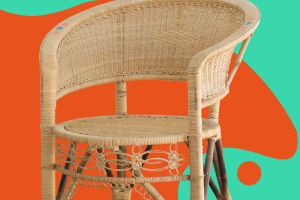Kids' Dream Rooms
Children's rooms are special places in the house where children play, rest, and learn every day.
As children grow, their rooms become an essential part of their lives, helping them to develop healthy habits, independent living skills, and creativity. A well-designed children's room can also create positive childhood memories that last a lifetime.
The design of a children's room includes two essential parts: layout design and interior decoration. When designing the layout of a child's room, factors such as the room's orientation, size, and depth should be considered, as well as its relationship with other rooms in the house.
A good room layout should be flexible and adaptable, capable of meeting a child's evolving needs as they grow and develop.
As children move from infancy to adolescence, their activity needs and physical and mental conditions will undergo significant changes. For example, the toys they once loved as toddlers may become less appealing as they grow older, while desks and bookcases may become insufficient to meet the demands of their academic workload.
To accommodate these changing needs, the size and shape of a child's room should take into account the various possibilities of furniture placement, creating a space that can adapt to different stages of a child's growth.
Lighting is another critical consideration when designing a children's room. Suitable lighting should provide basic illumination, ambient lighting, and functional lighting, each serving a different purpose.
Ceiling lamps, table lamps, reading lamps, bedside lamps, wall lamps, and spotlights can be combined to create a lighting scheme that meets the room's various functional and aesthetic requirements.
Additionally, lighting design should consider a child's developmental stage, sensitivity to light, and their tendency to play and explore in their rooms.
Because children are different from adults, all aspects of their bodies are in a state of constant development, growing rapidly, and sensitive to their environment. When choosing lighting fixtures, it's important to consider these factors and select lights that are suitable for children's unique needs.
The crib is often the first gift a child receives, and as such, it is a vital part of their early life. Safety and environmental considerations should be a top priority when selecting a crib.
Various types of cribs are available on the market, including cradle cribs, multifunctional cribs, foldable cribs, and European-style cribs, each with different materials and designs. Solid wood cribs are the most recommended choice due to their safety, durability, and eco-friendliness.
Multifunctional cribs, in particular, offer an excellent value by serving as both a crib and a bed, meeting the many needs of infants and young children.
The general length of a crib is around 110cm, with some models featuring extension functions that allow them to be extended to 140cm or longer, making them more practical for older children.
The crib's width is typically around 60cm, providing ample space for the child to sleep comfortably. The crib's height can be adjusted based on the child's height, ensuring their safety and preventing them from climbing out of the crib.
When selecting a crib, parents should pay attention to safety features, such as the spacing between the crib slats, the strength of the crib's structure, and the safety standards the crib meets. Environmental considerations, such as the use of non-toxic and eco-friendly materials, are also important.
A well-designed children's room can provide a safe, comfortable, and stimulating environment for children to play, learn, and grow. Careful consideration of layout, lighting, and furniture can help create a space that is adaptable and capable of meeting a child's changing needs.


